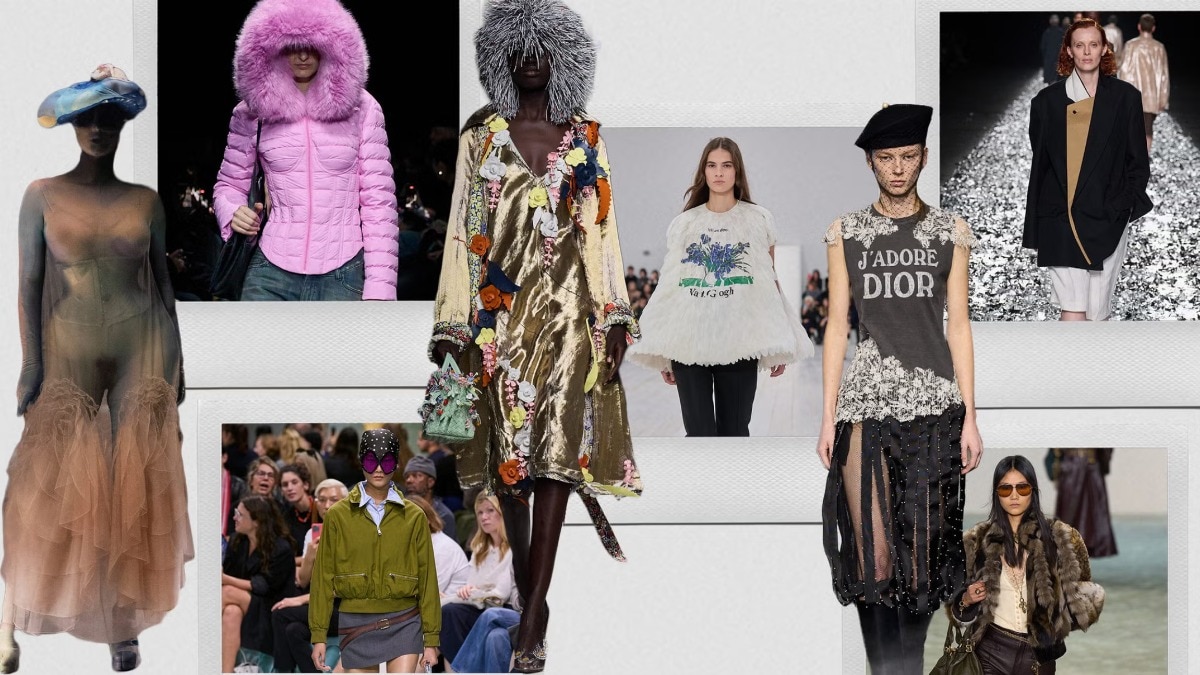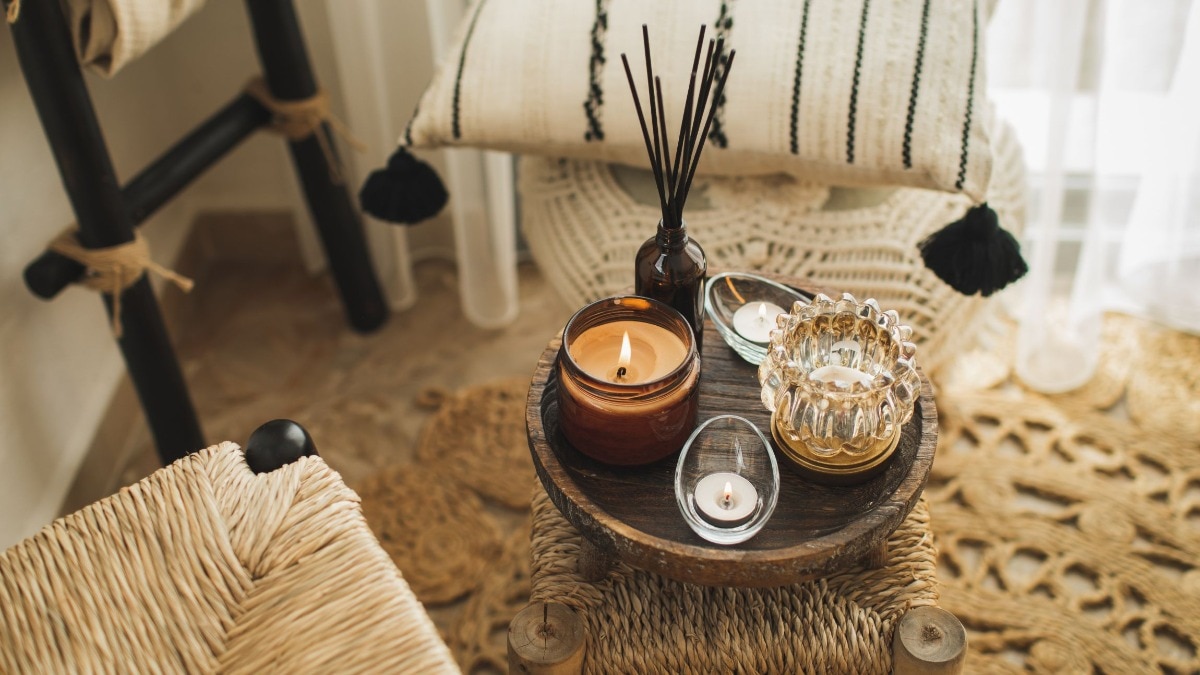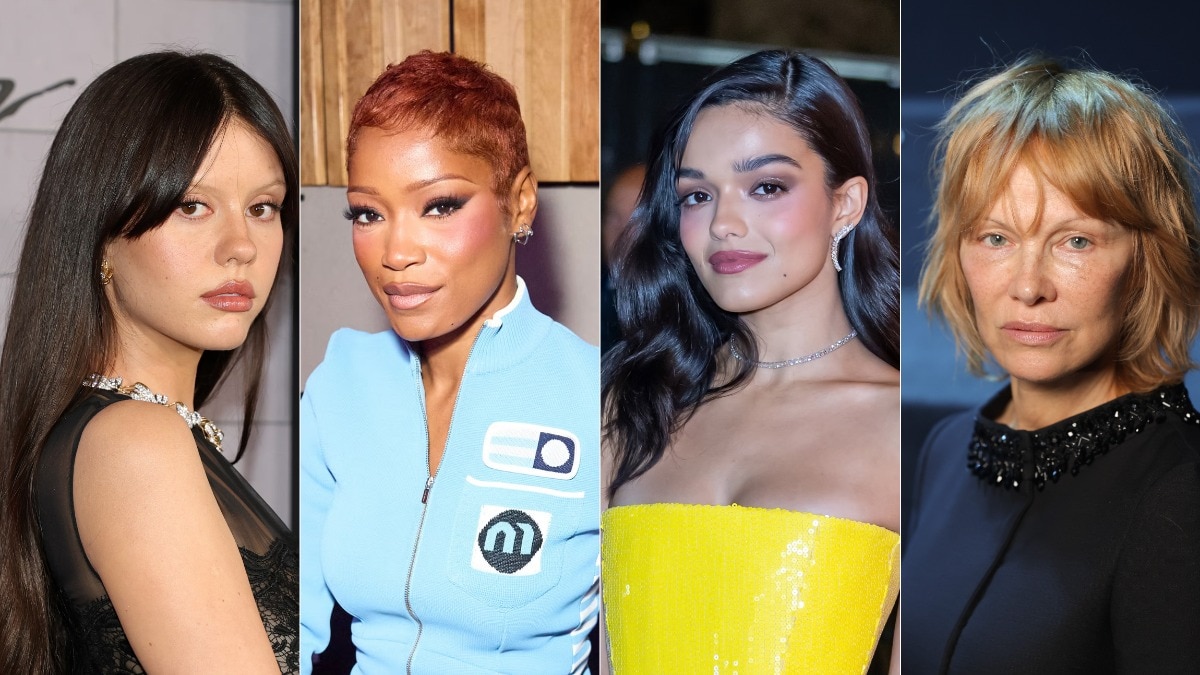
Rahul Mishra on redefining couture through craft and community
The couturier talks to Bazaar India about nurturing artisans through reverse migration, while balancing tradition with innovation.


The last two years have been of prodigious success for designer and couturier Rahul Mishra. From the commendatory Haute Couture outings at every Paris Fashion Week edition resulting in global acclaims, to creative collaborations, and being the brand of choice for A-listers, Mishra is clearly in the spotlight for all the right reasons. Those who have closely followed his growth, will vouch for the designer’s craft-centered and community driven philosophies, that more often than not transcend into his way of life. Mishra is busy, yet takes time out to meet me at his Noida atelier days ahead of his store launch in Hyderabad. I find him content yet excited. He shows me a quote from a 2014 article and chuckles, where the journalist describes Mishra as “the poster boy of handloom…”

The progression from handloom back in the day to his signature surface embellishments—the designer has indeed come a long way. His latest Indian festive couture collection, Nargis, is a testament to Mishra’s intimate bond with nature and its various experiences. The way he observes nature and interprets its intervention in our curated spaces is poetic, to say the least. Take for instance, Nargis articulates visuals from the window of a home, overlooking the abundance of flora and fauna. He translates visuals like a pride of peacocks frolicking in a Mughal garden, fiery red pomegranate flowers turning to ripe fruit or a bouquet of peonies into wearable art with traditional hand-embroidery techniques like aari thread-work, bugle beads, kundan, various kinds of rhinestone, crystals, glass beads, freshwater pearls, sequins, and nakshi pita work, to name a few.

Drawing reference from his collection note, I ask Mishra, so, what is the purpose of couture? It immediately takes him back to the Covid pandemic, when lives and livelihoods were at stake. “Those were the most difficult times and I had a lot to reflect upon. Who in their right minds would talk about fashion at that time of crisis? I asked all of my craftsmen to stay back, to prevent them from putting their lives at risk by trying to head back to their villages. Divya (Mishra’s wife and co-founder of the brand) and I reassured 50 per cent of their salaries through the months of lockdown. Their safety was of utmost importance to us.”

Once the lockdown eased out and the brand could function at limited capacity and hours, his artisans were making masks in the factories and distributing them all over. The digital format of the Paris Couture Week was upon him. “They were making embroideries of butterflies at that time and I remember one of the masks had butterflies flying around the face. It was inspired by nature’s reset during lockdown. When we saw the clear blue sky in Delhi, it was far greener than ever, birds and butterflies took over. So, why do you need fashion, you ask? I was watching this film, Dead Poets Society. There’s a beautiful quote that translates into, ‘farming, management, medical—these noble professions are critical to the society to sustain lives but poetry, romance, love, and art is what we are alive for’.” That’s what stuck with him and he named the A/W’20 Haute Couture Collection, Butterfly People. The artisans were excited to come back to the studio and work. It was almost metaphorical—with the concept of growing a garden to attract the butterflies. “Our embroideries are almost like a garden, that is attracting these people to come out and breathe life into these beautiful creations. To draw parallels with nature, butterflies pollinate more flowers making it a cyclical process. In literal sense as well, with the slowness of couture, we get to employ so many people. When I make a lehenga collection that takes, say, hundreds of human hours, it goes to say how slow the process is, creating that much employment for the craftsman.” This is where Mishra feels couture is necessary for a country like India.


The couturier is long known for his efforts to work with the grassroot level and build a sustainable ecosystem, which in return drives craft excellence. The artisans and weavers have been at the front and centre of the brand. Since 2013, he has been promoting the reverse migration of embroidery artisans from densely populated sub-factory set-ups in the metropolises to their communities in the villages. It all dawned upon him in 2011, when Mishra started to dabble in embroideries and visited one of his artisans, Afzal Zariwala’s workshop. “I was struck by the horrors of their living conditions in Jijamata and Dharavi slums, (both in Mumbai). Once I asked Afzal bhai where he and his team come from. He told me the artisans were from Afzal’s neighbouring villages in West Bengal and that he trained them. It was 2013 when I actually started reverse migrating them. Divya and I were setting up this unit and we both had the hope that somehow we’ll manage it. We had no idea if it’s going to work out. We told the embroiderers that we will pay them the same wages that they got in the city, and provide requisite aid to go back home and work from their villages.”
A weaver from Chanderi (Madhya Pradesh), Hukum Chandra Kohli left an indelible impression in Mishra’s life. “When starting out, I was in a partnership firm but it didn’t work out. Divya and I thought that if entrepreneurship doesn’t work, we’ll teach at NIFT. One fine day, Hukum Kohli came with two bags full of chanderi fabrics and saris. He assured us to start the business and added ‘jab paise ho jaaye mujhe de dena (pay me once you make money)’. Afzal bhai came forward and said the same thing. So, they became my first investors and somehow, they saw more in us than what we did in ourselves.” The reverse migration helped Afzal bhai to build his house in the village. “Pakka ghar (concrete house) works as a stepping stone and earns them respect in the society. I once asked an embroiderer, how are things now? He said going back to his village and being around his kids, while earning ‘well’ were the best things that could have happened. Home-cooked meals are a bonus,” Mishra’s eyes sparkle as he talks about his ‘people’, intently.

Craft can live in museums like anywhere else in the world. We can go on with our lives wearing simple clothes devoid of embroideries. “Nobody needs embroideries, but it creates sustainable employment. Maybe couture is needed for society and the country at large, so we can employ more people.” This is the definite purpose of couture and the power of craftsmanship as perceived by Mishra. “My artisan’s child can pursue MBA from the Indian Institute of Management or dream of becoming an IAS officer. This is what Divya and I are working for,” he tells Bazaar India. Afzal bhai’s daughter is studying in London.
For Mishra, his creative process of crafting an ensemble is more spiral than linear. “The intention always is to start in stages and delve deep into details. But when you design something, it’s never linear. Even the process of embroidery, sometimes tailored detailings come first and become complicated to embroider after that. We have to reinvent, redesign a lot of processes, even material sources. Like, for the Aura collection, playing with metal took a lot of time and effort. You may compare the process with a spring. For instance, on a spiral route it may feel like you move in circles, but in reality you still make progress,” he explains.

Indian craftsmanship has always been there on the global platform—whether we talk about 300 years back, when chintz was exported out of India, or a Balenciaga embroidered garment or a Rahul Mishra ensemble today, it’s always crafted in India, he points out. “The world knows about Indian craftsmanship. But it’s ‘thought leadership’ from India that often lacks representation. We tend to define the ‘global order’ through somebody else’s lenses. So as a brand, there’s a conscious effort at times to put a sari out there, to make embroideries which may look very Oriental at the same time. For my clothes, they need to smell like they come from India. Our craftsmanship is always there at the forefront but what about creating Indian aesthetics and storytelling? I was very happy when I watched a video on Instagram by ‘I Deserve Couture’ (Hanan Besovic). He spoke about Lord Brahma while talking about the Aura collection. An international fashion critic expressing views on Indian culture and traditions—that’s the power of effective storytelling. At the end of the day, it’s not just about selling those 20 outfits and getting covers of multiple fashion magazines.”

When it comes to creative collaborations, Mishra is mindful and takes up one out of 10 options. The ones involving packaging designs are fun for Mishra, take for instance Hoegaarden. The brand also collaborated with Singapore Tourism recently and he presented a capsule collection as an ode to the city. “These don’t take much of our bandwidth but are exciting and crucial for business. The product-oriented collaborations are far more challenging and involve a lot of research. One needs to understand the technicalities of the product.” Case in point, the designer’s upcoming exclusive collaboration with Tod’s. He adds, “This is a passion project where we are transforming our signature embroideries onto Tod’s wide range of accessories. It’s going to be one-of-its-kind. When I started working on the first prototypes, I had to figure out a lot of things, like it’s not just about putting some beads on leather. The brand works with certain grains of leather that are of the highest quality. We took a long time to develop the technique, so that once you have embroidery onto the leather, its integrity is retained. It took us more than five to six years to achieve that kind of proficiency.”
Mishra has his hands full with a few more collaborations and new collections towards the end of the year. “Exciting times are ahead of us,” he smiles and concludes.
All images: Photographs by Ishita Mishra
This article originally appeared in Harper's Bazaar India, September 2024, print edition.
Also read: Rahul Mishra weaves magic into Tod's heritage
Also read: Exclusive: Rahul Mishra on being the Grand Finale designer for Lakmē Fashion Week X FDCI










